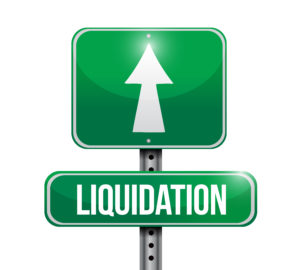3 December 2019
Part 1 of the publication detailed the general process of the voluntary liquidation. In the current article we will summarise the simplified voluntary liquidation, and we will draw your attention to certain interesting topics or questions related to the voluntary liquidation.

1. Simplified Voluntary Liquidation
Starting 1 July 2018. Act V of 2006 on Public Company Information, Company Registration and Winding-up Proceedings („Ctv”) allows that the owners of a limited liability corporations choose the simplified voluntary liquidation procedure. Let’s see what makes this procedure simplified.
The basic criteria of the simplified voluntary liquidation procedure is, that the company should not be subject to independent audit, and the procedure should finish within 150 days.
This solution might be a choice for companies, that properly maintained its financial accounts, and tax position during the past, that has no major liabilities, legal disputes, its property allows sufficient cover for expenses related to the liquidation, for tax obligations, and for any existing creditor claims, and its contractual relationships can be easily terminated.
There is no need to appoint a liquidation officer during a simplified voluntary liquidation procedure, it can be accomplished by the executive officers of the company.
It is not mandatory either, to report the voluntary liquidation to the Court of Registry, it is sufficient to inform the competent tax authority about the start of the simplified voluntary liquidation. The Court of Registry will fulfil the necessary legal actions, based on the official notice of the tax authority. Such legal actions are:
- official disclosure of the start of the voluntary liquidation
- indication in the name of the corporation, that it is under voluntary liquidation
- registration of the starting day of the voluntary liquidation process
During the simplified voluntary liquidation procedure it is mandatory to prepare the specified financial statements, corporate legal documents, and asset distribution proposal. Should the voluntary liquidation come to its end, it also has to be reported toward the competent tax authority. However, unlike the reporting of the start of the procedure, the end of the simplified voluntary liquidation should also be electronically reported to the Court of Registry in line with Act CCXXII of 2015 on the General Rules for Trust Services and Electronic Transactions (“E-administration law”). Documents specified by law, some of which might be prepared true to specimen, should also be filed with the Court of Registry.
In case any issue arises (legal dispute with a creditor, protracted authority audit) which delays the end of the simplified voluntary liquidation procedure, it can be converted to a process based on general rules, which allows more time to resolve the pending business matters and finalise the liquidation of the company.
2. Issues and questions related to the voluntary liquidation
2.1 Who can be appointed as a liquidation officer?
Any natural person can be appointed as a liquidation officer, provided that he complies with the rules of the Civil Code („Ptk”) relevant for executive officers, and accepts the appointment. Should the liquidation officer be a legal entity, the Ptk rules should apply on the natural person, who is appointed by the entity to conduct the voluntary liquidation procedure. The legal entity appointed to be the liquidation officer, the legal entity shall comply with the specific regulations and conflict of interest rules of Act 69. of 1991 on Bankruptcy Proceedings and Liquidation Proceeding.
The liquidation officer can be recalled, in which case the general meeting of the company shall appoint a new one.
Should the liquidation officer die, cease its activity or ceasing to exist without legal successor, and the general meeting of the company does not appoint a new liquidation officer within 60 days, the Court of Registry in its own name, or in the name of a concerned 3rd party can initiate the call of a general assembly in order to appoint a new officer.
Should the liquidation officer cease its activity, a concerned 3rd party can initiate at the Court of Registry the start of a judicial review proceeding against the company.
2.2 Responsibility of the Liquidation Officer
The Liquidation Officer shall act with professional care, primarily focusing on the value of the company’s assets, and on the interest of the creditors’. The liquidation officer is responsible based on the rules of civil liability for the damages caused. In case of wilful act or gross negligence the court can oblige the liquidation officer to contribute to the equity of the company in the amount the proved damage, and withdraw its fee. Such case can be, if the liquidation officer delays the transformation of the simplified voluntary liquidation process into a process based on general rules (Part II. point 1.) or it delays the transformation of the voluntary process into a statutory one (Part I. point 1.3), it prefers certain creditors to others, he does not act with professional care to minimize the losses of any creditors, or to mitigate damage caused to the environment.
In case the liquidation officer does not act with professional care, and a concerned 3rd party signals it to the Court of Registry, a judicial review proceeding can be initiated, in course of which the Court can oblige the liquidation officer to fulfil its duties by a given deadline. Should the deadline not be met, financial penalty might be imposed.
2.3 The responsibility of the executive officers in relation to the voluntary liquidation procedure
The former executive officers in position before the Starting Date of the voluntary liquidation are responsible for the voluntary liquidation to the extent of the tasks and duties listed in Part I. point 1.2. of our publication. Should the executive officer not perform those tasks and duties, or perform with delay, or not with the desired professional care, he is responsible based on the general rules of civil liability. Upon the request of the liquidation officer, or of a creditor of the company the Court of Registry can repeatedly impose a financial penalty ranging from 100-900 kHUF in frame of a judicial review proceeding. In addition the Court can oblige the executive officer to reimburse the cost of the expert commissioned by the liquidation officer to fulfil the defaulted task.
2.4 What are the responsibilities of the member(s)/shareholder(s) in connection with the voluntary liquidation procedure?
The responsibility of the member(s)/shareholder(s) of the company under voluntary liquidation equals to the responsibility created upon the inception of the company, the voluntary liquidation has no special impact on it. Thus, in case the company is a limited liability corporation the limitation shall apply, should the company operate legally.
2.5 Is the 40 day period determined to report creditor claims is a mandatory limit?
As from publishing the fact of starting a voluntary liquidation, creditors have 40 days to notify the liquidation officer of their existing claims. Should a creditor not send its notice within the 40 day time limit, it still has the opportunity to make a claim. Thus the 40 day time period is not mandatory. Following the acceptance of the closing financial statement and the asset distribution proposal by the general meeting, any creditors claim can be enforced based on the general rules on the liabilities of a ceased enterprise. Thus, on certain conditions, a creditor can claim from the member(s)/shareholder(s) of the company within a mandatory 5 year period starting from the cancellation of the company from the company register. In such a case, it should be considered, if the member(s)/shareholder(s) had limited or unlimited liability, and to what extent.
2.6 What are the events, that rule out the closing of the voluntary liquidation?
The voluntary liquidation procedure cannot be closed by the liquidation officer, until there are any known claims by or from the company that were not addressed in the asset distribution proposal.
We would like to draw your attention, that should the net asset of the company do not cover the total of the creditor-claims, and the missing amount is not paid in to the company within 30 days by the member(s)/shareholder(s), the liquidation officer shall request to turn the voluntary process to a statutory liquidation process.
2.7 Is there a mandatory deadline for ending the voluntary liquidation?
Within 3 years from the Starting Date of the voluntary liquidation, the process should be finished. Should the cancellation of the company not be executed within the 3 years limit, the Court of Registry shall initiate an enforced cancellation procedure, and the liquidation officer shall cooperate with the authorities
In case of the simplified voluntary liquidation process, in case the legal 150 day deadline is not sufficient, it should can be continued based on the general rules of voluntary liquidation, however it should in all case finish within 3 years.
2.8 Can the voluntary liquidation be withdrawn?
Yes, the general meeting of the company can withdraw its decision on the voluntary liquidation until the cancellation request has been filed with the Court of Registry. The general meeting shall decide on the further operation of the company, the recall of the liquidation officer, and the appointment of the executive officers.
2.9 Fair market valuation of the assets, upon closing the voluntary liquidation
When closing the voluntary liquidation, the liquidation officer is obliged to report about the company’s financial position as of the closing date. In this financial statement, the net assets of the company should be shown on fair market value. Should the fair market value of the net assets be hire, than their book value, the positive variance shall be reported as a valuation income in the financial statements. Such positive variance forms the basis of the corporate tax as well. The same fair market value will be the basis of the personal income tax calculation, when the asset is distributed to a natural person after the cancellation of the company. As the fair market valuation impacts taxation, we propose to have independent expert valuation for all, or at least for the major net asset items.
2.10 Will the Tax Authority start an audit because of the start of a voluntary liquidation?
The Tax authority has to be informed about the start and the end of the voluntary liquidation. The Tax Authority is entitled to audit those periods, which have not yet been closed for review in line with the relevant regulations. Of course the Tax Authority is entitled to audit these periods even if there is no voluntary liquidation, however it has to be admitted, that announcing the voluntary liquidation can draw the Authority’s attention. A Tax Authority audit is a scary possibility for a lot of company owners, however the starting date of the voluntary liquidation is set by the owner(s) thus it is worthwhile to make a self-audit, and do the necessary corrections, before the voluntary liquidation procedure is kicked-off. This shall not be a significant effort in case of low activity entities, and it can also help to foresee, if there is a risk, that the voluntary process is turning to a statutory one, and be aware of the real financial position of the company, and any potential off balance sheet liabilities.
In case of question please contact:
Katalin Prjevara



